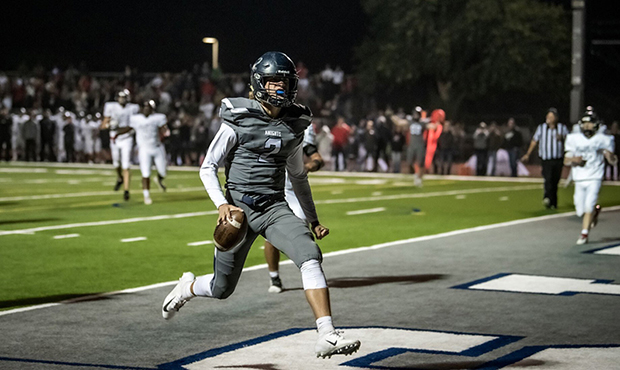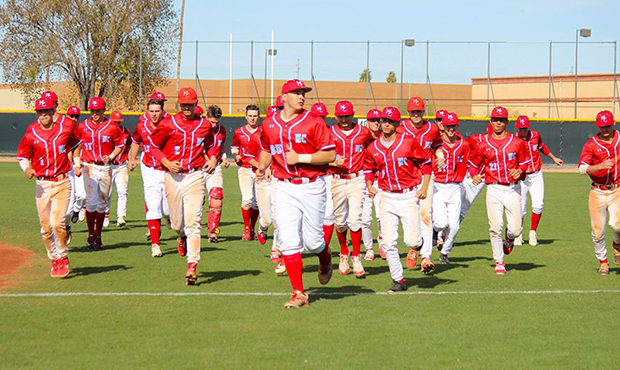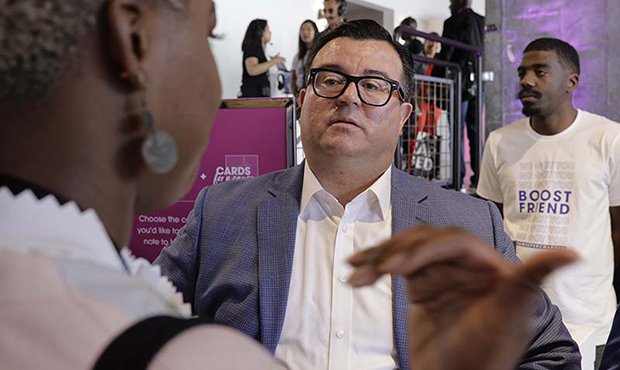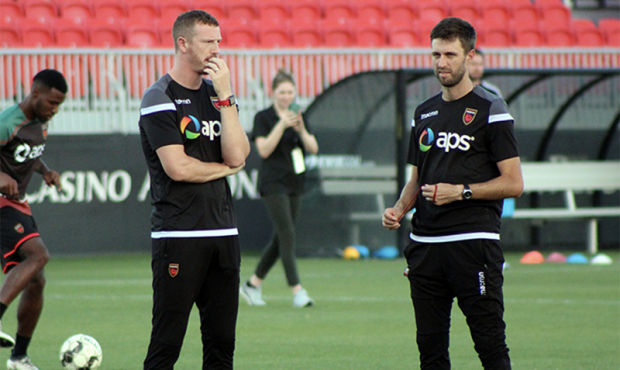‘Pay to Play’ is increasing burden for parents of high school athletes
Sep 22, 2017, 7:10 PM
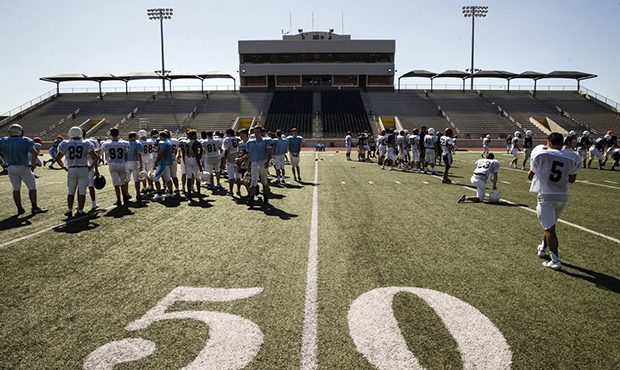
(AP Photo/Matt Rourke)
(AP Photo/Matt Rourke)
PHOENIX– When Denise Wilson’s children first approached her about participating in high school sports, she had no idea how much it would cost. She knew she would have to supply them with the proper shoes and attire, but she never imagined the total cost over the years would exceed $7,000.
“They don’t tell us where the money is going,” Wilson said. “They just keep asking for more money and we have to pay it.”
Ranking 49th nationally for education funding, Arizona’s budget for public schools is a controversial issue in the state. Low teacher salaries and elective cutbacks all are impacted. So, too, are extracurricular activities, and with fall sports under way, parents are facing a rude awakening: More and more school districts are charging steep fees for athletics, more commonly referred to as “pay to play.”
Nationally, 61 percent of high schools require a play-to-play fee, according to a study by the University of Michigan’s C.S. Mott Children’s Hospital. It also found that two percent of parents said that the cost of school sports caused a drop in participation for at least one of their children.
Wilson, mother of two former Sandra Day O’Connor High School students, paid a significant amount for her children to participate in athletics. Her son, Corey, played baseball at O’Connor before earning a scholarship to UNLV. Her daughter, Jordin, was a cheerleader and now attends the University of Arizona. For baseball, they had to pay about $400 per year and for cheer, they paid approximately $2,500 per year.
“We still not only pay, but two years ago they implemented an athletic fee so for every sport you play, you have to pay the district $100,” Wilson said. This fee is implemented for up to two sports, so each student potentially has to pay $200 additional dollars.
For her daughter, the cheer team was required to pay an additional amount of money for their mandatory practice at a cheer gym.
“Cheer gym might have been, like, $120 a month, on top of the other fees,” Wilson said. “The other fees are so expensive because you’re basically paying for coaches that the school doesn’t want to allot money to.”
The school gets one big athletic fund and can decide how it wants to allocate the money. Like many other districts that are pay-to-play, Deer Valley Unified School District chose not to allocate funds to cover athletics for students.
“The one year that the parents really complained about paying, and it became a huge issue, suddenly the principal said, ‘Don’t worry, you don’t have to pay it,’ and they came up with the money,” Wilson said.
Although some districts like Deer Valley may have the ability to charge students to participate, districts in lower income areas do not. Glendale Union High School District and Phoenix Union High School District are among the few in Maricopa County that have not implemented a “pay to play” policy. Many schools in both of these districts are considered Title I — schools with a high percent of students from low income families — and students would struggle to find the necessary funds to participate.
Kim Mesquita, the administrator for Community Relations at GUHSD, said that charging students to participate would go against their beliefs.
“We maintain the philosophy that all kids should have the opportunity to participate in athletics, co-curricular activities and extracurricular activities,” Mesquita said. “Therefore, we do not impose a fee.”
Yvette Carlon has four sons that have attended or still attend Moon Valley High School in the Glendale Union High School District. Her children have all been involved in multiple sports such as football, basketball, baseball, and track. For the Carlons, if they had to pay for each individual sport, they would likely not be able to participate.
“That would have been a very big financial impact on my family,” Carlon said. “If my boys had to pay to play, there would be no way they would have been able to play because my husband was the sole financial provider.”
In 2009, Carlon was diagnosed with cancer. Due to her illness, she was forced to quit her job and they became a single-income household, relying solely on her husband. Five years of radiation treatment kept her out of work. She rejoined the workforce in 2014 but was recently laid off, making them a single-income household once again.
“If they were to add pay to play, I think there would be a big impact on the students in the whole community of Glendale Union High School District,” Carlon said.
Although she can’t speak for others in the district, she knows that the biggest impact would be on larger families. “You never know someone’s situation, but I would think having multiple kids, it would be hard to pay that fee.”
Carlon said the impact pay to play would have on the school is demonstrated in the fact that she sees many families that can’t afford for their kids to play Pop Warner football. Many of the freshmen come into high school with no prior football experience.
“He (coach Brian Smith) has to not only coach them, he has to teach them the fundamentals because they had never played football going into high school,” Carlon said. “We are a little bit behind feeder schools where their Pop Warner teams go straight into the schools.”
Matt Elliott, the head basketball coach at Moon Valley, used to coach at Scottsdale Unified School District’s Desert Mountain High School. SUSD charged their students to participate in athletics, so Elliott has been able to experience both sides of the spectrum.
“I don’t like the pay to play rule,” Elliott said. “A parent might wonder why they paid a $150 to $200 athletic fee and their daughter or son isn’t getting much playing time.”
This often causes a strain on the relationship between the parents and coaches, Elliott said.
But the possible tension between parents and coaches is not the only reason Elliott doesn’t agree with pay to play.
“If students did have to pay to participate in athletics in our district, I think you would see a decrease in the number of students going out for sports,” he said. “Being involved in athletics, clubs and activities at school are important for students. Lifelong lessons are learned by being involved in something at school.”
Many students in Glendale’s district also have outside responsibilities such as part-time jobs. Elliott thinks that this helps to build character.
“I like when our players work or help their families,” Elliott said. “It teaches them responsibility and prepares them for life.”
Steve Pletenik, the communications director at Phoenix Union High School District, said it would be detrimental for the students in his district as well.
“Eighty-five percent of our kids are from low-income families,” Pletenik said. “It would be dramatic for our kids.”
Phoenix Union High School District charges a $3 to $5 activity fee for students to be involved in a sport. The rest of the funding is carefully calculated by the district.
“It’s part of our maintenance and operations budget,” Pletenik said. Their belief is that these programs encourage kids to be involved on campus, which in turns leads to increased academic activity. Part of the correlation is because of the need to be academically eligible to play.
Pletenik also mentioned the district already struggles to get students involved in extracurricular activities because of outside responsibilities. If they implemented pay to play, it would only further hurt extracurricular activities.
For Phoenix Union and Glendale Union, the uniforms and necessary equipment (such as footballs and basketballs) are provided by the district. Many of the schools also have booster clubs that help fundraise for the teams to make sure they have what they need.
Despite what is provided for students through the state’s education budget, Arizona’s spending per-student still falls far below the national average. According to Governing.com, the amount of money schools spent on students in Arizona decreased 11.3 percent between 2010 and 2014. In 2010, the state spent $8,520 per student. Four years later, the state only spent $7,528 dollars.
New York State, in comparison, increased its spending by 2 percent during the same amount of time from $20,213, to $20,610 dollars. The national average is just over $11,000.
Nothing suggests educational funding in Arizona will change soon. And for many parents, that’s disheartening news.

